Loading
Journal of Experimental Neurology
ISSN: 2692-2819
All Articles
Maintenance of [Met5]-enkephalin Blood Levels Corresponds with a Positive Outcome in Multiple Sclerosis
Patricia J. McLaughlin, Ian S. Zagon
Multiple sclerosis (MS) is a debilitating disease with a multifactorial etiology that remains to be fully defined. In the United States alone it is estimated that there are one million individuals living with MS.
J Exp Neurol, 2022, Volume Volume 3, Issue Issue 1, p1-4 | DOI: 10.33696/Neurol.3.053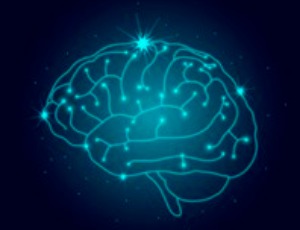
Muscle and Its Neuromuscular Synapse – Players in the Pathogenesis of Motor Neuron Disease
Peter G. Noakes, William D. Phillips, Rosalind L. Jeffree, Frederik J. Steyn, Ernst J. Wolvetang, Rob D. Henderson, Pamela A. McCombe, Shyuan T. Ngo
Motor Neuron Disease (MND) of which Amyotrophic lateral sclerosis (ALS) is the most common form, is a devastating disorder where approximately 80% of patients die within 3-5 years of diagnosis. The highly variable clinical presentation, course, and prognosis between individuals suggests that a variety of factors underlie the pathogenesis of the disease.
J Exp Neurol, 2023, Volume Volume 4, Issue Issue 1, p1-5 | DOI: 10.33696/Neurol.4.067
CCR3 Expression in Relation to Delayed Microbleeds in a Rat Model of Large Vessel Occlusion
Sydney M Claypoole, Jacqueline A. Frank, Sarah J Messmer, Keith Pennypacker
Thirty percent of ischemic stroke patients develop vascular cognitive impairment and dementia (VCID) within 1 year of stroke onset. The expression of C-C motif chemokine receptor 3 (CCR3) is associated with endothelial dysfunction and memory impairment. CCR3 has been reported to increase after experimental stroke and in human stroke patients. Using an in vivo model of stroke, our study aims to link CCR3 expression with endothelial dysfunction in this rodent stroke model.
J Exp Neurol, 2024, Volume Volume 5, Issue Issue 1, p1-8 | DOI: 10.33696/Neurol.5.082
Study on Imaging Findings, Pathology and Treatment of Cerebellar Infarction
Xiaoyun Zhou, Bao Wang, Guanfeng Shang, Bin Zhao
To explore the pathological mechanism and clinical treatment of cerebellar infarction through the clinical imaging changes of cerebellar infarction.
J Exp Neurol, 2020, Volume Volume 1, Issue Issue 1, p1-9 | DOI: 10.33696/Neurol.1.001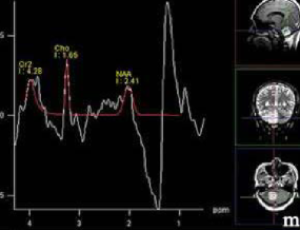
Retroviral Elements in Human Evolution and Neural Development
Tongguang Wang, Tara T. Doucet-O’Hare, Lisa Henderson, Rachel P. M. Abrams, Avindra Nath
Human embryogenesis and the development of its most unique product, the human brain, are believed to be precisely regulated by factors adopted during human
evolution that differentiate us from other species.
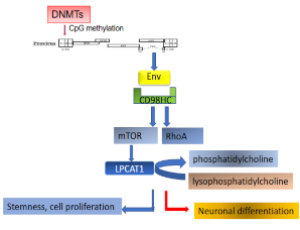
Is MGMT Gene Silencing an Opportunity for Enhanced Metformin Action in Glioblastoma cells?
Amro H. Mohammad, MD, PhD, Roberto. J. Diaz
Isocitrate dehydrogenase 1 (IDH1)-wild type glioblastoma (GBM) constitutes about 12-15% of primary central nervous system tumors. The 5-year survival remains dismal at less than 5% due to the limited options available in the management of GBM patients. Metformin (N, N-dimethyl biguanide), a medication used primarily in the management of patients with type 2 diabetes mellitus, showed anti-proliferative actions in the management of various tumor cells, including GBM. The temozolomide (TMZ)-based genotoxic management of GBM patients elicits DNA damage response (DDR) pathways that limit the efficacy of TMZ and induce resistance.
J Exp Neurol, 2025, Volume Volume 6, Issue Issue 1, p1-10 | DOI: 10.33696/Neurol.6.104
Caring for the Vulnerable and Disadvantaged
Sidonie E. Ibrikji MD, Shumei Man MD, PhD
Ischemic stroke carries a high readmission rate [1]. Among Medicare beneficiaries hospitalized for acute ischemic stroke, 14.1% were readmitted within 30 days, 29.2% within 90 days, and 55.3% within 1 year [1].
J Exp Neurol, 2022, Volume Volume 3, Issue Issue 1, p5-7 | DOI: 10.33696/Neurol.3.054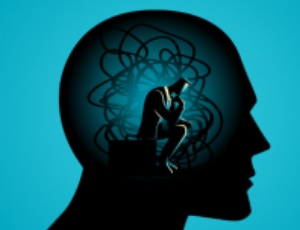
Current Spinal Cord Injury Animal Models are Too Simplistic for Clinical Translation
Lara Gliksten, Ping K Yip
Spinal cord injury (SCI) is a devastating disease that has a global impact on individuals and society. The number of SCI cases in 2016 was 27 million worldwide, which was predominantly due to falls and road traffic collisions. Alarmingly, the number of new SCI cases in most countries has risen over the last few decades.
J Exp Neurol, 2023, Volume Volume 4, Issue Issue 1, p6-10 | DOI: 10.33696/Neurol.4.068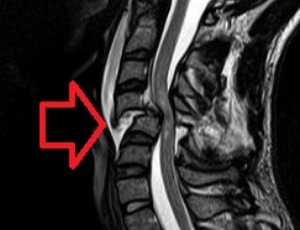
Comparing Contrast Agent Enhancement: The Value of Artificial Intelligence/Machine Learning
Matthew J Kuhn MD, Julia W Patriarche PhD, Douglas Patriarche BSc, Massimo Bona MD, Miles A Kirchin PhD, Gianpaolo Pirovano
Gadolinium-based contrast agents (GBCAs) work by shortening the T1, T2, and T2* relaxation time constants of adjacent water protons in tissues.
J Exp Neurol, 2022, Volume Volume 3, Issue Issue 1, p8-14 | DOI: 10.33696/Neurol.3.055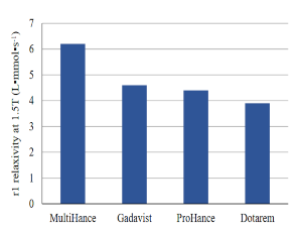
Could Neonatal Electroclinical Syndromes Orchestrate Diagnosis and Treatment?
Rene Andrade Machado
Neonatal seizures are associated with neurodevelopmental impairments. Implementing long-term video-EEG monitoring in the neonatal intensive care unit became the gold standard for seizure diagnosis. During the neonatal period, seizures can be associated with an acute brain insult called acute symptomatic seizures (ASS) or being part of neonatal epilepsy that may have a structural, metabolic, or genetic cause.
J Exp Neurol, 2024, Volume Volume 5, Issue Issue 1, p9-18 | DOI: 10.33696/Neurol.5.083
Prevention of Suicide in Persons with Progressive Neurological Diseases
Ladislav Volicer
People suffering with neurological diseases are at risk of committing suicide. A case-control study found increased risk of attempted suicide in patients with nine chronic neurological diseases [1]
J Exp Neurol, 2020, Volume Volume 1, Issue Issue 1, p10-12 | DOI: 10.33696/Neurol.1.002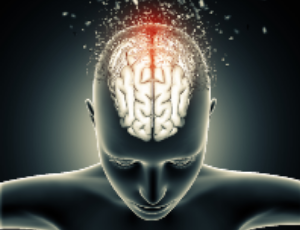
Cathepsin D: A Candidate Link between Amyloid β-protein and Tauopathy in Alzheimer Disease
Caitlin N. Suire, Malcolm A. Leissring
Alzheimer disease (AD) is a debilitating neurodegenerative disorder characterized by extracellular deposition of the amyloid β-protein (Aβ) and intraneuronal accumulation of the microtubule-associated protein, tau
J Exp Neurol, 2021, Volume Volume 2, Issue Issue 1, p10-15 | DOI: 10.33696/Neurol.2.029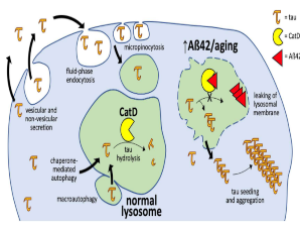
Cisterna Magna Injection Mouse Model of Subarachnoid Hemorrhage (SAH): A Systematic Literature Review of Preclinical SAH Research
Serdar Alpdogan, Ke Li, Timo Sander, Jan Frederick Cornelius, Sajjad Muhammad
This review article describes the characteristics of published literature using the cisterna magna blood injection mouse model of subarachnoid hemorrhage (SAH) with the aim to define particular standards and identify moderators of mortality rate, SAH grade, and large artery vasospasm.
J Exp Neurol, 2023, Volume Volume 4, Issue Issue 1, p11-20 | DOI: 10.33696/Neurol.4.069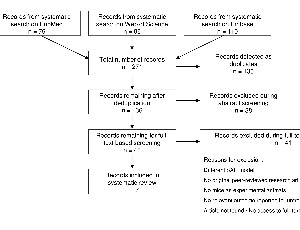
Upper-limb Robots after Stroke: How to Get beyond the Hype?
Luca De Iaco, Gert Kwakkel
Upper limb (UL) rehabilitation is driven by intensive, task-specific training. In this article we further elaborate on the results of a systematic review and meta-analysis on the effectiveness of UL-robots (UL-RTs) to recovery of UL-motor impairment, UL-capacity, and basic-ADLs post-stroke when compared to any non-UL-RT. Our second aim was to identify patient, trial, robot and other intervention variables that are associated with found effect sizes (ESs).
J Exp Neurol, 2025, Volume Volume 6, Issue Issue 1, p11-20 | DOI: 10.33696/Neurol.6.105
Epilepsy in Neurodegenerative Disease: A Commentary
Arun Swaminathan
Case Summary - We published a case report of a 22-year-old woman who presented to our university hospital with encephalopathy and left hemiparesis of a few weeks duration.
J Exp Neurol, 2020, Volume Volume 1, Issue Issue 1, p13-16 | DOI: 10.33696/Neurol.1.003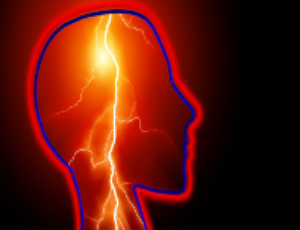
Virtual Reality Zoo Therapy: An Interactive Relaxing System for Alzheimer’s Disease
Hamdi Ben Abdessalem, Marc Cuesta, Sylvie Belleville, Claude Frasson
The number of people with Alzheimer’s disease (AD) is on the rise, yet there is no effective pharmacological treatment that can slow or reverse the disease’s progress
J Exp Neurol, 2022, Volume Volume 3, Issue Issue 1, p15-19 | DOI: 10.33696/Neurol.3.057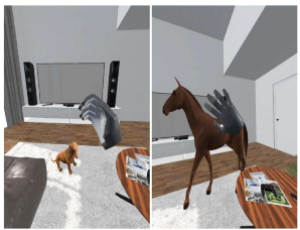
Atrial Fibrillation, Atrial Cardiopathy and Cryptogenic Strokes
Jindong Xu, Pramod Sethi, Rizwan Sabir
Cryptogenic stroke (CS) refers to the cerebral infarcts for which no definite cause is identified after adequate diagnostic evaluation. It accounts for 10-15% of all
strokes. Most of the cryptogenic strokes are embolicappearing non-lacunar infarcts based on the radiographic pattern.
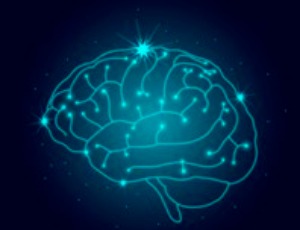
Commentary on "Dysfunction of the Magnocellular Stream in Alzheimer Disease Evaluated by Pattern Electroretinograms and Visual Evoked Potentials"
Ferdinando Sartucci, Luciano Domenici, Vittorio Porciatti
Alzheimer’s disease (AD) represents the most common cause of dementia. Even if AD is commonly viewed as a disorder primarily of memory, there are several other additional domains, including visual function.
J Exp Neurol, 2020, Volume Volume 1, Issue Issue 1, p17-25 | DOI: 10.33696/Neurol.1.004
Mechanical Thrombectomy for All LVO – Is It Feasible? – Recent Evidence to Expand the Current Stroke Guidelines
Jindong Xu, Cortney de La Torre, Devon Shafer, Margely Carrion-Carrero, Pramod Sethi
Mechanical thrombectomy (MT) has established its role as a standard care of acute ischemic stroke due to large vessel occlusion (LVO). Current early stroke management guidelines have defined certain selection criteria for LVO patients undergoing MT to achieve the most benefit. However, it is still uncertain if some other LVO patients who do not meet these criteria can also benefit from MT.
J Exp Neurol, 2024, Volume Volume 5, Issue Issue 1, p19-34 | DOI: 10.33696/Neurol.5.084
In the Mind of the US Olympic Athletes; Longevity Advantage and Its Relation to Nervous System Disorders and Mental Illness
Moi Yamazaki, Jean-François Toussaint, Juliana Antero
In a recent study of 8124 US Olympic athletes, Antero et al. [1] found that the US Olympic athletes live 5 years longer than their general counterparts.
J Exp Neurol, 2022, Volume Volume 3, Issue Issue 1, p20-23 | DOI: 10.33696/Neurol.3.058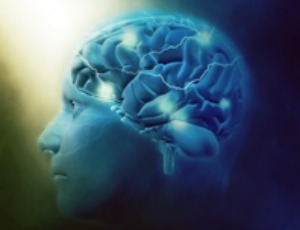
Ethical Frontiers: Navigating the Intersection of Neurotechnology and Cybersecurity
Er. Kritika
Technological advances of neuroscience and cybersecurity have created a rapidly developing field and newer opportunities alongside challenges of ethics. Some of the emerging ideas that include, brain computer interfaces (BCIs), neuroimaging technologies (EEG, fMRI) etc.
J Exp Neurol, 2025, Volume Volume 6, Issue Issue 1, p21-25 | DOI: 10.33696/Neurol.6.106
Commentary on Vulnerability and Resilience to Activity- Based Anorexia and the Role of Dopamine
Jeff A. Beeler, Nesha S. Burghardt
Anorexia nervosa (AN) is an eating disorder characterized by a fear of gaining weight and self-starvation, leading to life-threatening weight loss [1]. It occurs predominately in women and frequently begins during adolescence.
J Exp Neurol, 2021, Volume Volume 2, Issue Issue 1, p21-28 | DOI: 10.33696/Neurol.2.031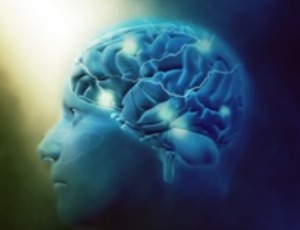
The Ventral Tegmental Area (VTA), the Nucleus Accumbens (NAc), the Caudate Nucleus (CN) and the Prefrontal Cortex (PFC) role in the Response to Acute and Chronic Methylphenidate
Nicholas King, Nachum Dafny
Methylphenidate (MPD) is psychostimulant, similar to cocaine and amphetamine, that is commonly used to treat attention deficit hyperactivity disorder and is increasingly being abused by healthy subjects for its psychoactive effects such as memory retention cognitive enhancement for young, adult and the elderly and recreation. MPD’s action on the brain reward/motive circuit is still under investigation
J Exp Neurol, 2023, Volume Volume 4, Issue Issue 1, p21-36 | DOI: 10.33696/Neurol.4.070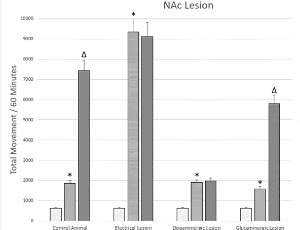
A Rodent Lumbosacral Spinal Cord Injury Model Reflecting Neurological and Urological Deficits of Humans
Behnaz Afrashteh, Karin Roider1, Sophina Bauer, Lukas Lusuardi, Patrick Heimel, David Hercher, Ludwig Aigner, Esra Keller
Spinal cord injury (SCI) to the terminal segments of the spinal cord causes severe disruption of the neural circuitry of the bladder, resulting in neurogenic underactive bladder (nUAB). We developed a rodent lumbosacral injury model to investigate the effects of bladder function and structure.
J Exp Neurol, 2022, Volume Volume 3, Issue Issue 2, p24-34 | DOI: 10.33696/Neurol.3.059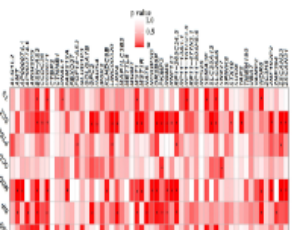
What is the Time Necessary to be Able to Place Transpedicular Screws According to the Chosen Technique?
Iñaki Arrotegui
Transpedicular screw placement techniques are technically plaintiffs have relied on navigation intraoperative which is limited by its high cost, limited use of a fluoroscope with the radiological overexposure of the personnel of health and patient offers limited help when placing screws, and vertebral anatomical modifications especially in patients with degenerative pathology result an index of placement-related complications suboptimal of the screws [1,2].
Since its introduction by Roy-Camille [3] and Louis [4] in the seventies, the use of screws pedicle has increased markedly to the present day
J Exp Neurol, 2020, Volume Volume 1, Issue Issue 1, p26-30 | DOI: 10.33696/Neurol.1.005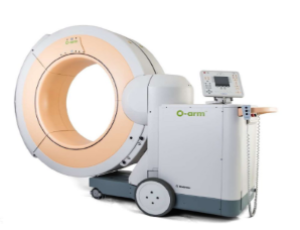
Time-of-Day and State-Dependent Variation in Movement Disorders: A Primer of Relevant Clinical Conditions
Javier Andres Suarez, Sarah Comstock , Michael Comstock, Edison K. Miyawaki
Movement disorders may vary with the time of day and with mental state. Despite hypothalamic control of biological timing, we discuss how many cell populations throughout the brain and body, including dopaminergic nuclei, likely have time-keeping functions. We provide a “primer” of movement disorders with significant variation in time or with presentation in a state of altered consciousness. Parkinsonism illustrates our overall argument.
J Exp Neurol, 2025, Volume Volume 6, Issue Issue 1, p26-48 | DOI: 10.33696/Neurol.6.107
- Abstract |
- Full Text |
- Cite |
- Supplementary File
Commentary: Use of BACTRAC Proteomic Database-Uromodulin Protein Expression During Ischemic Stroke
Gabriella-Salome K. Armstrong, Jacqueline A. Frank, Christopher J. McLouth, Ann Stowe, Jill M. Roberts, Amanda L. Trout, Justin F. Fraser, Keith Pennypacker
Uromodulin (UMOD) is a glycoprotein expressed by the epithelial cells of the thick ascending limb of Henle’s loop in the kidney. Research has shown that increased uromodulin expression may be associated with lower risk of cardiovascular disease in adults.
J Exp Neurol, 2021, Volume Volume 2, Issue Issue 1, p29-33 | DOI: 10.33696/Neurol.2.032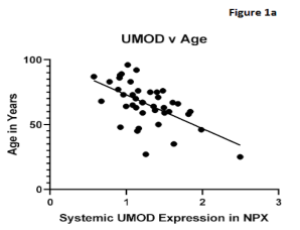
Should Food Cravings be Controlled or Understood?
Jônatas de Oliveira, Ta´ki Athana´ssios Corda´s
Food Cravings (FC) is the term commonly used to describe sensations related to an intense desire for specific consumption [1], and there are features that we separate into internal and external aspects related to FC [2]
J Exp Neurol, 2020, Volume Volume 1, Issue Issue 2, p31-34 | DOI: 10.33696/Neurol.1.006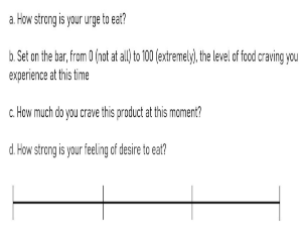
Commentary on “Health-related Quality of Life and Posttraumatic Stress Disorder in Inpatients Injured in the Ludian Earthquake: A Longitudinal Study”
Wanqiu Yang, Lin Chen, Guangjie Zhang, Xinjin Zou, Wen Chen, Yu Liu, Yubo Huang
Posttraumatic stress disorder (PTSD) is a common psychiatric disorder after experiencing trauma exposure and characterized by at least one symptom from the four clusters: intrusion, avoidance, negative mood and cognitive alterations, as well as abnormal arousal and reactivity
J Exp Neurol, 2021, Volume Volume 2, Issue Issue 1, p34-38 | DOI: 10.33696/Neurol.2.033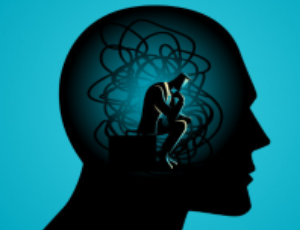
Negative is Not Always Negative: Improving Outcomes in Scalp Negative Seizures Using Intracranial EEG
Isha Snehal, Daniel J. Zhou, M.D, Arun Swaminathan
Refractory seizures sometimes arise from deeper foci within the brain. When difficult to detect on scalp EEG, chances of successful epilepsy surgery are reduced. Two patients had scalp Electroencephalogram (EEG) negative seizures, got intracranial EEG and did well with responsive nerve stimulation (RNS).
J Exp Neurol, 2022, Volume Volume 3, Issue Issue 2, p35-38 | DOI: 10.33696/Neurol.3.060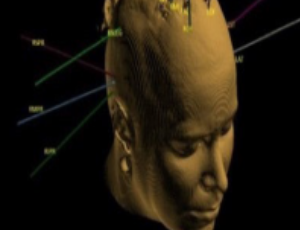
Skeletal Muscle Weakness Often Occurs in Patients with Myalgic Encephalomyelitis / Chronic Fatigue Syndrome (ME/CFS)
Yves Jammes, Frédérique Retornaz
This commentary complements data reported in Clinical Biomechanics [1] reporting reduced maximal handgrip strength in numerous patients with myalgic encephalomyelitis / chronic fatigue syndrome (ME/CFS) in proportion to their lowered maximal physical performances.
J Exp Neurol, 2020, Volume Volume 1, Issue Issue 2, p35-39 | DOI: 10.33696/Neurol.1.007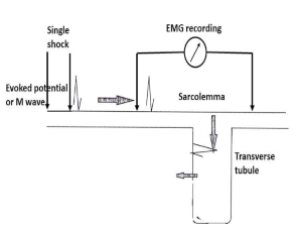
Diagnosis and Treatment of Normal Pressure Hydrocephalus and Repeated Subdural Hematoma and Effusion after Ventriculoperitoneal Shunt in the Elderly: A Case Report
Qing-Yong Wang, Qingjun Li
Idiopathic normal pressure hydrocephalus (iNPH) is a special type of hydrocephalus that is characterized by cognitive decline, gait disturbance, and urinary incontinence. It can lead to dementia and bedridden within 1-3 years. Without surgical treatment in time, the prognosis was bleak. We report an iNPH case misdiagnosed with Alzheimer’s disease, with a disease course of 3 years.
J Exp Neurol, 2024, Volume Volume 5, Issue Issue 1, p35-39 | DOI: 10.33696/Neurol.5.085
Benefits of Routine Inpatient EEG in Practice: Experience from a Level 4 University Hospital
Isha Snehal, Kanchan Kumari, Makayla Schissel, Arun Swaminathan
Routine inpatient EEGs have been part of epilepsy practices for years. We aim to improve current routine EEG practices by studying their role at a large university hospital. Methods: Inpatient routine EEGs from January-July 2021 were included and patients <5 yrs., EEGs repeated on the same patient were excluded. Indications, floor status, abnormality, day of study, neurology consultation, results, treatment changes, discharge status, and prior AED use were analyzed using SAS 9.4.
J Exp Neurol, 2023, Volume Volume 4, Issue Issue 1, p37-42 | DOI: 10.33696/Neurol.4.071
Stroke, Oxygen and Prehospital Care: A Commentary on Current Treatments and Opportunities for Improvement
John Collins, Igor Rybinnik, Bryan Fischberg, Jonathan McCoy
Stroke is a common and very serious illness where timely evaluation and intervention can have dramatic effects on patient outcomes.
J Exp Neurol, 2021, Volume Volume 2, Issue Issue 1, p39-46 | DOI: 10.33696/Neurol.2.034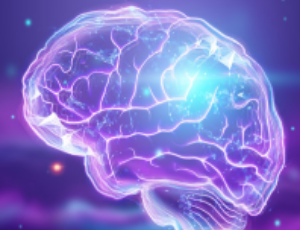
Discovery of New Candidate Genes for Anorexia Nervosa through Integration of eQTLs with Summary Statistics
Ting Wang, Jiahao Qiao, Haimiao Chen, Ping Zeng, Lihong Huang
Anorexia nervosa (AN) is a neuropsychic syndrome characterized by restriction of energy intake relative to requirements, abnormally low body weight and fear of weight gain, resulting in extreme emaciation and even death [1].
J Exp Neurol, 2022, Volume Volume 3, Issue Issue 2, p39-48 | DOI: 10.33696/Neurol.3.061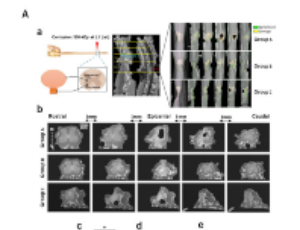
Definition and Characteristics of Multiple Sclerosis with Predominant Cognitive Presentation
Amanda Fiori Cavassani, Álix Djone Berté, Andressa Ribeiro Pinto, Marcus Vinicius Magno Gonçalves, Gabriel de Deus Vieira
We recently reported a longitudinal MRI and cognitive follow-up of a patient with multiple sclerosis with predominant cognitive presentation (MSCP), showing the evolution of the disease and the difficulty in its early diagnosis [1]. In this commentary, we will briefly overview the definition and clinical manifestations of MSCP.
J Exp Neurol, 2024, Volume Volume 5, Issue Issue 1, p40-41 | DOI: 10.33696/Neurol.5.086
Managing Acute Urinary Dysfunction for Neurologic Injury Patients
Brandon Lucke-Wold
Damage to the nervous system can have direct and indirect impact on the lower urinary tract. Broadly speaking, damage can be grouped into three categories: problems with bladder storage, stress incontinence, and problems with bladder emptying [1].
J Exp Neurol, 2020, Volume Volume 1, Issue Issue 2, p40-42 | DOI: 10.33696/Neurol.1.008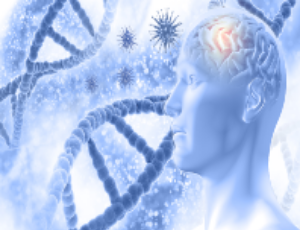
Cerebrovascular Dysfunction in Alzheimer’s Disease and Transgenic Rodent Models
Xing Fang, Fan Fan, Jane J Border, Richard J. Roman
Alzheimer’s Disease (AD) and Alzheimer’s Disease-Related Dementia (ADRD) are the primary causes of dementia that has a devastating effect on the quality of life and is a tremendous economic burden on the healthcare system. The accumulation of extracellular beta-amyloid (Aβ) plaques and intracellular hyperphosphorylated tau-containing neurofibrillary tangles (NFTs) in the brain are the hallmarks of AD.
J Exp Neurol, 2024, Volume Volume 5, Issue Issue 2, p42-64 | DOI: 10.33696/Neurol.5.087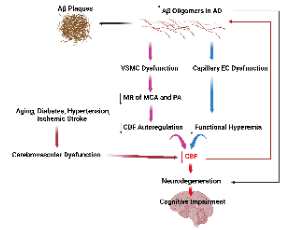
To Stick or Not to Stick? Scalp and Intracranial EEG Evaluation Both Help Achieve Good Surgical and Neuropsychiatric Outcomes in Epilepsy Surgery up to 20 Years Post-Surgery
Arun Swaminathan, Kathryn Davis, Brian Litt, Ammar Kheder, Jay Pathmanathan
Epilepsy has a worldwide prevalence of about 50 million [1]. Seizure medications provide adequate control in two thirds of these patients but about a third are refractory to multiple medications and need surgery or other treatments [2].
J Exp Neurol, 2020, Volume Volume 1, Issue Issue 2, p43-49 | DOI: 10.33696/Neurol.1.009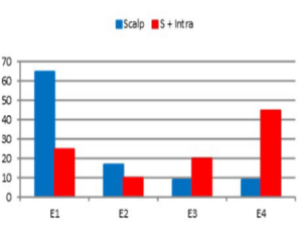
Generation of Human Oligodendrocyte Progenitors for Treatment of Demyelinating Diseases and Spinal Cord Injury
Thomas Hazel, Michael Hefferan, Kateryna Schwartz, Ningpu Yu, Karl Johe, Michael Levy
Glial cells play a critical role in the development and function of the mammalian central nervous system (CNS). Among other roles, these cells provide the myelin sheath needed for the efficient propagation of impulses along nerve fibers, provide trophic support for neuronal cells, and remove toxins and excess neurotransmitters from the interstitial space. Transplantation of glial cells or glial progenitors into the diseased or injured CNS can provide therapeutic benefits.
J Exp Neurol, 2023, Volume Volume 4, Issue Issue 2, p43-54 | DOI: 10.33696/Neurol.4.072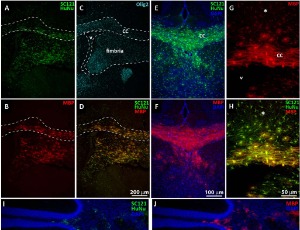
Posterior Circulation Tandem Occlusions- Classification and Techniques: A Commentary
Shelly Sharma, Michael McAree, Hekmat Zarzour
Posterior circulation tandem occlusion is an area of neurosurgery that has not been heavily studied, particularly in regards to treatment modalities. These strokes occur more rarely than other forms of stroke and, frequently, conventional surgical intervention is no longer an option by the time patients present to the hospital.
J Exp Neurol, 2021, Volume Volume 2, Issue Issue 1, p47-48 | DOI: 10.33696/Neurol.2.035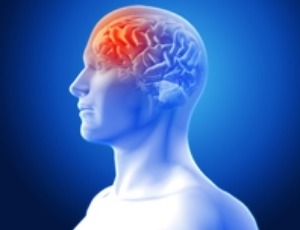
Update on Clinical Management with Neurovascular Stents
Danyas Sarathy, Mohammed Elghareeb, Alec Clark, Rebecca Zelmanovich, Brandon Lucke-Wold
Endovascular stenting has continued to evolve given the new trials. Several new stents have recently been developed to address specific purposes. In this focused review, we discuss the concepts of neurointerventional stents and address the clinical implications.
J Exp Neurol, 2022, Volume Volume 3, Issue Issue 2, p49-59 | DOI: 10.33696/Neurol.3.062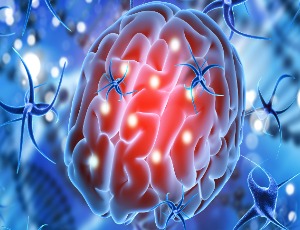
Glutaminergic Signaling in the Nucleus Accumbens Modulates the Behavioral Response to Acute and Chronic Methylphenidate
Thomas Ming, Nachum Dafny
Methylphenidate (MPD) is a psychostimulant that is widely used to treat attention deficit hyperactivity disorder, and is being increasingly misused as a recreational drug and cognitive enhancer
J Exp Neurol, 2021, Volume Volume 2, Issue Issue 1, p49-61 | DOI: 10.33696/Neurol.2.036
N-Acetylcysteine Ameliorates Loss of the Electroretinogram b-wave in a Bardet-Biedl Syndrome Type 10 Mouse Model
Tyler J. Rankin, Sara Mayer, Joseph G. Laird, Brianna Lobeck, Emily Kalmanek, Arlene V. Drack
Bardet-Biedl Syndrome (BBS) is a rare autosomal recessive disorder characterized by retinal degeneration leading to blindness. This study investigates the therapeutic efficacy of N-Acetylcysteine (NAC), an oxygen free radical scavenger, in ameliorating retinal degeneration associated with BBS using a murine model of BBS10. BBS is caused by mutations in BBS genes, the protein products of which are involved in ciliary function; mutant or absent BBS10 protein disrupts the assembly of the BBSome protein complex, disturbing ciliary trafficking and leading to photoreceptor cell dysfunction and death.
J Exp Neurol, 2025, Volume Volume 6, Issue Issue 1, p49-63 | DOI: 10.33696/Neurol.6.108
- Abstract |
- Full Text |
- Cite |
- Supplementary File
Intracranial Pressure Monitoring in Aneurysmal Subarachnoid Hemorrhage -Current Practices and Challenges
Xiuyun Liu
The annual incidence of aneurysmal subarachnoid hemorrhage (SAH) in the United States is 6-16 cases per 100,000 population, with approximately 30,000 cases occurring each year.
J Exp Neurol, 2020, Volume Volume 1, Issue Issue 2, p50-54 | DOI: doi.org/10.33696/Neurol.1.010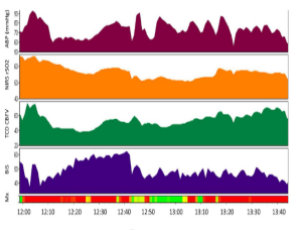
Daily Activity Restriction Quantification in Older Population via Using Activity Frequency: Dual Roles in Preventing Falls
Xia Shen, Lin Yu Chen, Jing Xin Wang, Yan Na Jiang
Daily activity restriction is an expected physical behavior aiming to prevent falls in the older population. However, it plays dual roles in preventing falls, both positive and harmful. Therefore, the degree of daily activity restriction is proposed as a critical factor influencing the weight ratio of the positive and negative roles and finally determining the efficacy of fall prevention. Thus, quantification of daily activity restriction is essential to learn its efficacy.
J Exp Neurol, 2023, Volume Volume 4, Issue Issue 2, p55-57 | DOI: 10.33696/Neurol.4.073
Treatment of Neurological Manifestations of Mucopolysaccharidoses: Translational Considerations in Drug Development
Anita Grover, Charles A O’Neill, Simon A. Jones
Since the development of Ceredase® and Cerezyme® for the treatment of Gaucher disease in the early 1990s, treatment of lysosomal storage disorders via enzyme replacement therapy (ERT) has provided life-changing benefit to patients and their families.
J Exp Neurol, 2020, Volume Volume 1, Issue Issue 3, p55-61 | DOI: 10.33696/Neurol.1.011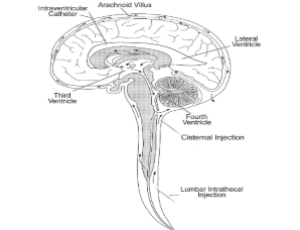
Late Decrease in Cerebral Blood Flow in Bacterial Meningitis: More than a Simple Normalization of Acute Inflammatory Vessel Wall Architecture?
Vivig Shantha Kumar, Vignarth Shantha Kumar
Acute bacterial meningitis is a disease with an overwhelmingly high mortality rate and high incidence of adverse neurological sequelae and poor neurological recovery amongst survivors. Amongst the numerous complications of bacterial meningitis, the presence of cerebrovascular disease represents a severe disease form. Vascular involvement during bacterial meningitis has long been established by numerous pathological and angiographic studies.
J Exp Neurol, 2023, Volume Volume 4, Issue Issue 2, p58-75 | DOI: 10.33696/Neurol.4.074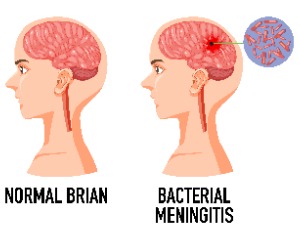
Nonarteritic Anterior Ischemic Optic Neuropathy (NAION) Induced by Selective Agonist of Serotonin 5-HT1 Receptor – A Case Report
Bárbara Maini de Carvalho, Matheus Alves da Silva, André Luiz Guimarães de Queiroz, Hennan Salzedas Teixeira, Marcelo Freitas Schimid, Karlla Danielle Ferreira Lima, Christiane Monteiro de Siqueira Campos, Ione Feijão Alexim, Alex Machado Baeta
Ischemic optic neuropathies are prevalent diseases and important cases of vision loss. In particular, non arteritic ischemic optic neuropathy (NAION) is the most common cause of optic neuropathy after 50 years of age and the etiology of NAION involves risk factors from the patients and some drugs as triggers, like triptans, selective agonists of 5-HT1 receptors.
J Exp Neurol, 2022, Volume Volume 3, Issue Issue 2, p60-62 | DOI: 10.33696/Neurol.3.063
Inhalational Anaesthetics: An Update on Mechanisms of Action and Toxicity
Jan Jedlicka, Philipp Groene, Julia Linhart, Elisabeth Raith, Davy Mustapha, Peter Conzen
Inhalational anaesthetics have been used for induction and maintenance of general anaesthesia for more than 150 years. In human medicine desflurane, sevoflurane, and isoflurane are commonly used.
J Exp Neurol, 2021, Volume Volume 2, Issue Issue 2, p62-69 | DOI: 10.33696/Neurol.2.037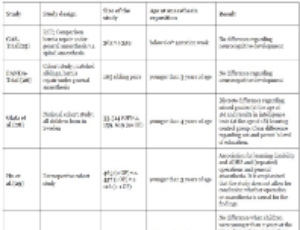
Neuroinflammation and Microglial Polarity: Sirolimus Shifts Microglial Polarity to M2 phenotype in a Mouse Model of Tuberous Sclerosis Complex
Makiko Koike-Kumagai, Mari Wataya-Kaneda
Tuberous sclerosis complex (TSC) is a neurocutaneous syndrome characterized by systemic hamartomas, including skin and neural symptoms. Many patients exhibit epilepsy, intellectual disability, autism, and other behavioral and neuropsychiatric symptoms, referred to as TSCassociated neuropsychiatric disorders (TAND).
J Exp Neurol, 2022, Volume Volume 3, Issue Issue 3, p63-70 | DOI: 10.33696/Neurol.3.064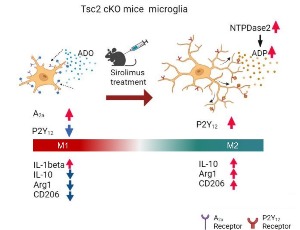
Atypical Presentation of NMDA Receptor Encephalitis in a 4-year-old Male: A Case Report of Successful Treatment with Rituximab and Tetrabenazine
Felix A. Appiah, Sadat Gül, Nicole Brescia
N-methyl-D-aspartate (NMDA) receptor encephalitis is an autoimmune disorder historically associated with anti-NMDA receptor antibodies, predominantly described in young women with ovarian teratomas. This case presents a 4-year-old male with NMDA receptor encephalitis, highlights the importance of early detection and aggressive treatment of movement disorders in pediatric autoimmune encephalitis and contributes to the limited literature on the successful use of tetrabenazine for symptomatic control in children.
J Exp Neurol, 2025, Volume Volume 6, Issue Issue 2, p64-66 | DOI: 10.33696/Neurol.6.109
Treatment of Sleep Disorders in Children with Atopic Dermatitis: What's New?
Maria Beatriz Tavares Camacho Pereira, Larissa Toledo de Lima Duarte Souza, Dennis de Carvalho Ferreira, Juliany Estefan
Atopic dermatitis (AD), also known as atopic eczema, is a chronic and inflammatory disease caused by an interaction of genetic, immunological, and environmental factors. It is characterized by skin lesions and itching and progresses with periods of improvement and worsening.
J Exp Neurol, 2024, Volume Volume 5, Issue Issue 2, p65-72 | DOI: 10.33696/Neurol.5.088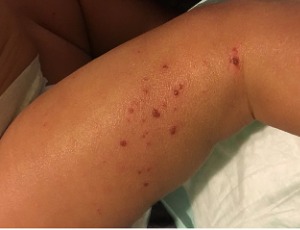
Prophylactic and Therapeutic Modulation of the OGF-OGFr Axis Ameliorates Angiogenesis-associated Pathology in Experimental Autoimmune Encephalomyelitis
Laura B. Odom, Ian S. Zagon, Patricia J. McLaughlin
Multiple sclerosis (MS) is a chronic autoimmune disease associated with inflammation and neurodegeneration of the central nervous system. MS pathogenesis includes angiogenesis, the formation of new blood vessels from existing vasculature. Angiogenesis facilitates the migration of inflammatory immune cells across the blood-brain barrier in MS. The opioid growth factor (OGF)-opioid growth factor receptor (OGFr) axis is a potential target for limiting angiogenesis in MS.
J Exp Neurol, 2025, Volume Volume 6, Issue Issue 2, p67-75 | DOI: 10.33696/Neurol.6.110
Neural Population Computing: Parallel Distributed Processing, the Basal Ganglia, and Evolution
Stephen E. Nadeau
Representations in the central nervous system are population encoded. Understanding the computational processes subserved by pools of cortical and connected subcortical neurons constitutes one of the major challenges facing systems neuroscience.
J Exp Neurol, 2021, Volume Volume 2, Issue Issue 2, p70-75 | DOI: 10.33696/Neurol.2.038
Commentary: Calcitonin Gene Related Peptide and Its Clinical Utility for the Treatment of Traumatic Brain Injury, Subarachnoid Hemorrhage and Associated Migraine
Yusuf Mehkri, Maxwell G. Woolridge, Brandon Lucke-Wold
Calcitonin gene related peptide (CGRP) is a potent vasodilator and neurotransmitter that has been extensively studied in the context of migraine pathophysiology. Recently, studies have explored its role in the treatment of traumatic brain injury (TBI) and subarachnoid hemorrhage (SAH). Although a multitude of therapies exist for migraine, there has been little study on the management of migraine following neurologic injury.
J Exp Neurol, 2022, Volume Volume 3, Issue Issue 3, p71-74 | DOI: 10.33696/Neurol.3.065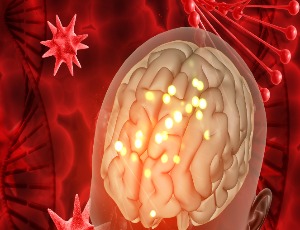
Homeostatic Synaptic Plasticity may be Targeted for the Prevention of Post-Stroke Epilepsy
Yadav Adhikari, Xiaoming Jin
Stroke is the most common cause of acquired epilepsy, with up to 30 percent of stroke survivors developing epilepsy over time. However, the mechanisms leading to neuronal hyperexcitability and epilepsy in stroke survivors are not fully understood. In a recently published work, we demonstrate that ischemic stroke induces homeostatic plasticity regulation in the surviving neurons in the peri-stroke area.
J Exp Neurol, 2024, Volume Volume 5, Issue Issue 2, p73-78 | DOI: 10.33696/Neurol.5.089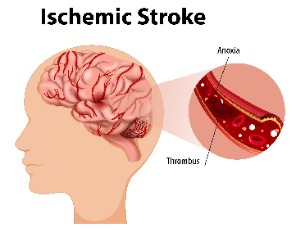
Commentary to the Newly Rising Aquatic Exercise: Ai Chi
Pei-Hsin Ku, Johan Lambeck, Nai-Chen Yeh, Ray-Yau Wang
As aquatic therapy has become an important rehabilitative option, more exercise programs have emerged. Ai Chi, is one of the therapeutic aquatic exercise concepts with growing potential.
J Exp Neurol, 2020, Volume Volume 1, Issue Issue 3, p73-79 | DOI: 10.33696/Neurol.1.013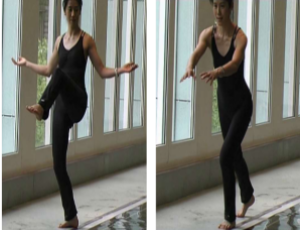
The Jalisco Mutation: Familiar Alzheimer’s Disease in México
Marco Antonio Meraz-Ríos, Erika Alejandra Cabrera-Reyes, Mayte Lizeth Padilla-Cristerna
Before the age of 65, people with mutations in the genes for Presenilin 1 (PSEN1), Presenilin 2 (PSEN2), and the amyloid precursor protein (APP) experience familial Alzheimer’s disease (FAD). The sporadic type of Alzheimer’s disease (AD) is multifactorial and associated with the Apolipoprotein E ε4 allele (APOE ε4), which can up to 12 times increase the risk of getting the condition
J Exp Neurol, 2022, Volume Volume 3, Issue Issue 3, p75-77 | DOI: 10.33696/Neurol.3.066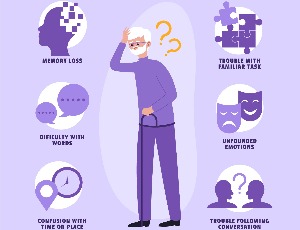
Primary Angiitis of the Central Nervous System (PACNS): A Commentary on a Proposed Screening Algorithm and an Update on Diagnosis and Treatment
Antonella Picchioni MD, Roberta Telese MD, Ylenia Failli MD, Cristina Sarti MD, PhD
Primary angiitis of the central nervous system (PACNS) is a rare disorder difficult to suspect in clinical practice due to its rarity, not specific/protean clinical presentation and imaging findings
J Exp Neurol, 2021, Volume Volume 2, Issue Issue 2, p76-80 | DOI: 10.33696/Neurol.2.039
Implications of Office-Based Pterygium Surgery for Neurological Practice
Adam Hidad
The transition of surgical procedures from hospital-based to office-based settings has raised important considerations regarding patient safety, cost-effectiveness, and procedural outcomes. The recent study by Cremers et al. (2025) evaluates the safety and efficacy of office-based pterygium surgery, reporting low complication rates, minimal postoperative pain, and significant cost savings. Of particular neurological interest is the reported case of central retinal artery occlusion following a peribulbar injection containing epinephrine, highlighting the potential vascular risks associated with local anesthetic administration.
J Exp Neurol, 2025, Volume Volume 6, Issue Issue 2, p76-82 | DOI: 10.33696/Neurol.6.111
An Updated Overview of Alzheimer’s Disease
Emmanuel Prikas
Alzheimer’s Disease (AD) is the most common form of dementia. Patients diagnosed with AD experience disordered cognition and memory, as well as changes in behaviour and personality. The vast majority of AD is diagnosed in patients aged over 65 years and classified as late onset (LOAD), with the remaining ~1% of cases termed early onset AD (EOAD).
J Exp Neurol, 2022, Volume Volume 3, Issue Issue 3, p78-81 | DOI: 10.33696/Neurol.3.067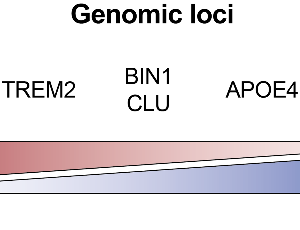
The Role of Transcranial-Color-Doppler in the Management of Basilar Artery Stenosis: Case Series and Systematic Review of Literature
Marta Filidei, Chiara Di Schino, Massimiliano Allegritti, Danilo Costanti, Ilaria Morandini, Alice Riva, Giovanna Viticchi, Carlo Colosimo, Stefano Caproni
Managing vertebrobasilar (VB) stroke, particularly basilar artery occlusion (BAO), presents challenges due to diverse clinical presentations and intricate diagnostics, risking delays in acute-phase reperfusion therapies. The diagnostic complexities of VB stroke prompt questions about whether presentation tempo influences outcomes. For non-urgent cases of basilar artery stenosis (BAS) lacking guidelines, clinical management becomes case-dependent.
J Exp Neurol, 2024, Volume Volume 5, Issue Issue 2, p79-94 | DOI: 10.33696/Neurol.5.090
Microptofluidic Technology for Biodiagnostics of Traumatic Brain Injury: A Commentary
P. Goldberg Oppenheimer
Traumatic brain injury (TBI) is a leading cause of death and neurological disability worldwide with millions of people sustaining and living with its long-term effects []. TBI is often categorized as mild, moderate and severe with primary injuries separated as either focal or diffuse, with the latter including contusions, intracranial hematomas and brain herniation.
J Exp Neurol, 2020, Volume Volume 1, Issue Issue 3, p80-88 | DOI: 10.33696/Neurol.1.014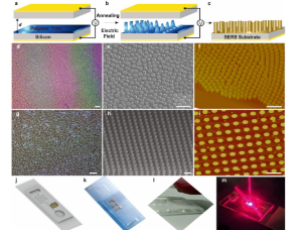
Combined Antiseizure Efficacy of Cannabidiol and Clonazepam in a Conditional Mouse Model of Dravet Syndrome
Shu-Hui Chuang, Ruth E. Westenbroek, Nephi Stella, William A. Catterall
Dravet syndrome (DS) is an intractable childhood epilepsy disorder affecting one in 15,000 to 20,000 births [1]. It is caused by de novo heterozygous lossof- function mutations in the SCN1A gene encoding the brain type-I voltage-gated sodium channel Nav1.1
J Exp Neurol, 2021, Volume Volume 2, Issue Issue 2, p81-85 | DOI: 10.33696/Neurol.2.040
Drug-Induced Peripheral Neuropathy: Focus on Newer Offending Agents
Mahjoubi Yasmine Salem
Peripheral neuropathy (PN) is a common neurological disorder resulting from peripheral nerve damage, significantly contributing to morbidity and adversely affecting patients’ quality of life. Drug-induced peripheral neuropathy (DIPN) accounts for 2-4% of cases and typically manifesting as distal, symmetrical sensory polyneuropathy. The growing diversity of medications complicates DIPN diagnosis, often leading to underreporting and mismanagement due to overlapping symptoms with other conditions. This systematic review analyzed DIPN literature up to September 15, 2024, emphasizing both established and emerging neurotoxic drugs.
J Exp Neurol, 2025, Volume Volume 6, Issue Issue 2, p83-104 | DOI: 10.33696/Neurol.6.112
Glypican-2 as the Regeneration-Associated Gene (RAG)
Kazuma Sakamoto, Yuji Suzuki, Kenji Kadomatsu
We recently reported that glypican-2, a neuronal cell surface glycoprotein, is involved in age-dependent differences in axonal regenerative capacity in the mammalian central nervous systems (CNS). While several extrinsic inhibitory factors expressed or deposited in the lesion after trauma hinder axonal regeneration, our understanding of intrinsic factors expressed in neurons that regulate axonal regeneration is still limited.
J Exp Neurol, 2023, Volume Volume 4, Issue Issue 2, p84-86 | DOI: 10.33696/Neurol.4.076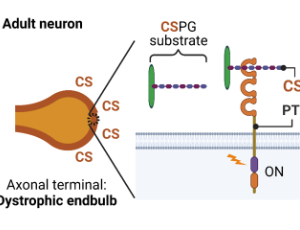
Investigation of B2-AR, TLR2, PICALM, and BDNF Gene Variants in Iranian Alzheimer’s Patients and Their Response to Rivastigmine
Parvin Mohabattalab, Fatemeh Rezaei Rad, Hamid Zamani, Fariba Shirvani, Mahdi Zamani
Alzheimer’s disease is the most common form of dementia with polygenic disposition occurring within various populations.
J Exp Neurol, 2021, Volume Volume 2, Issue Issue 2, p86-100 | DOI: 10.33696/Neurol.2.041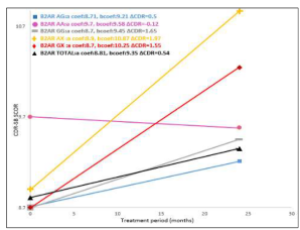
Therapeutic Effectiveness of Brain Computer Interfaces in Stroke Patients: A Systematic Review
Yordan P. Penev, Alice Beneke, Kevin Thomas Root, Emily Meisel, Sean Kwak, Michael Diaz, Julia Root, Mohammad R. Hosseini, Brandon Lucke-Wold
Brain-computer interfaces (BCIs) are a rapidly advancing field which utilizes brain activity to control external devices for a myriad of functions, including the restoration of motor function. Clinically, BCIs have been especially impactful in patients who suffer from stroke-mediated damage. However, due to the rapid advancement in the field, there is a lack of accepted standards of practice.
J Exp Neurol, 2023, Volume Volume 4, Issue Issue 3, p87-93 | DOI: 10.33696/Neurol.4.077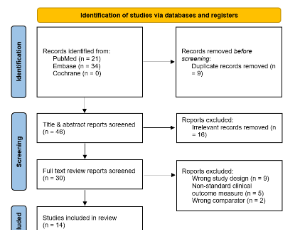
Alzheimers Disease: A Brief Review
Samantha McGirr, Courtney Venegas, Arun Swaminathan
The worldwide prevalence of dementia is estimated to be over 45 million people. Alzheimer’s disease (AD) is the most common cause of dementia, responsible for 60-80% of cases.
J Exp Neurol, 2020, Volume Volume 1, Issue Issue 3, p89-98 | DOI: 10.33696/Neurol.1.015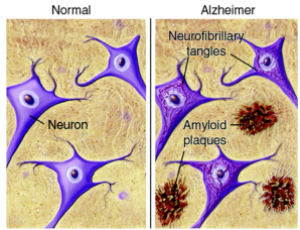
Responsive Neurostimulation for Management of Refractory Precuneus Onset Epilepsy: A Case Report
Arun Swaminathan
Posterior quadrant epilepsy is relatively uncommon and refractory seizures from these regions are difficult to diagnose and manage. A 28-year-old woman presented for evaluation of her seizures. Scalp Electroencephalogram (EEG) showed seizures with independent onset over the right posterior and left anterior regions.
J Exp Neurol, 2023, Volume Volume 4, Issue Issue 3, p94-99 | DOI: 10.33696/Neurol.4.078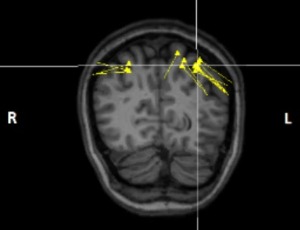
Hashimoto’s Encephalopathy: A Review
Arvind Ramesh, Arun Swaminathan
The condition "Hashimoto's encephalopathy" (HE) refers to a cerebral dysfunction syndrome with elevated antithyroid peroxidase antibody titers that is thought to have an autoimmune cause. Similar to autoimmune thyroid illness, women are more likely than men to develop HE. It has been documented in adult, geriatric, and pediatric populations worldwide. The clinical appearance may be recurrent and remitting, with myriad symptoms involving myoclonus, seizures, episodes resembling strokes, cognitive deterioration, and neuropsychiatric symptoms. Clinically and biochemically, thyroid function is often normal.
J Exp Neurol, 2024, Volume Volume 5, Issue Issue 2, p95-106 | DOI: 10.33696/Neurol.5.093
Effect of Exosomes on Alzheimer’s Disease
Jiewen Zhang, Ruihua Sun, Junkui Shang, Kai Ma
AD is a neurodegenerative disease characterized by progressive cognitive impairment, behavioral changes, memory loss and executive dysfunction, all of which present serious threats to the health of older people.
J Exp Neurol, 2020, Volume Volume 1, Issue Issue 3, p99-102 | DOI: 10.33696/Neurol.1.016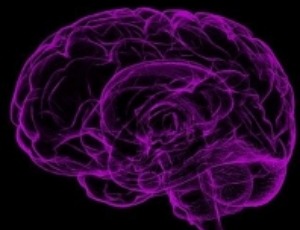
Change in Prevalence of Meningitis among Children with Febrile Seizure after the Pentavalent Vaccination
Shadi Shiva, Shokoufeh Khanzadeh, Vahid Shohanizad, Arshin Ghaedi, Brandon Lucke-Wold
Introduction: One of the most significant current discussions in pediatrics is whether lumbar puncture (LP) should be performed in children with febrile seizure (FS) as in the past. Objectives: We compared the prevalence of meningitis among FS children before and after the pentavalent vaccine to determine the importance of the LP in these children.
J Exp Neurol, 2023, Volume Volume 4, Issue Issue 3, p100-108 | DOI: 10.33696/Neurol.4.079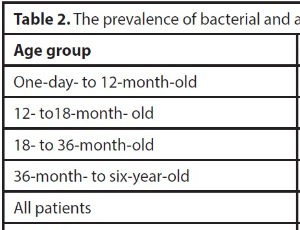
Association of Conformationally Altered Tau with α-1-antichymotrypsin in the Nuclei of Neurons in the Alzheimer's Disease Brain
Perla H. Horta-López, Jan Rícny, Benjamín Florán-Garduño, Francisco Garcia-Sierra
Conformational changes of Tau have been described to occur during its fibrillary and non-fibrillary aggregation inside neurons affected in the brain of Alzheimer’s disease (AD) patients. Two consecutive conformations have been described during the progression of the disease: an early conformation detected with the Alz-50 antibody, recognizing Tau molecules folding its amino terminus over its third repeated domain, and a later conformation involving the bending of the proline-rich region over the third repeated domain.
J Exp Neurol, 2023, Volume Volume 4, Issue Issue 3, p100-108 | DOI: 10.33696/Neurol.4.080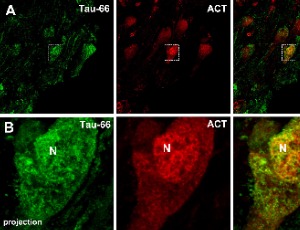
Much is Known about Caregiver Burden in Dementia - What is Next? The Role of Comorb idities and Future Perspectives
Gerhard Ransmayr, Michaela Defrancesco, Anna Damulina, Philipp Hermann, Thomas Benke, Peter Dal-Bianco, Josef Marksteiner, Alexandra Fuchs, Franz Fellner, Andreas Futschik, Reinhold Schmidt
Care for patients with chronic debilitating neurological diseases is often demanding and can result in a variety of negative consequences including mental and physical morbidity.
J Exp Neurol, 2021, Volume Volume 2, Issue Issue 3, p101-111 | DOI: 10.33696/Neurol.2.042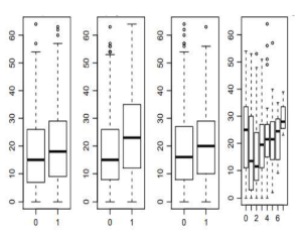
Neurocysticercosis: Autoantibodies, Another Cog in the Wheel of Its Variable Pathogenicity
Parkhouse R Michael, Sciutto Edda, Cortez Maria M, Fleury Agnes, Carpio Arturo
Neurological diseases are a major cause of disability and the second cause of death today. This reality has stimulated the search for predictive biomarkers facilitating early diagnosis and the design of appropriate treatments.
J Exp Neurol, 2020, Volume Volume 1, Issue Issue 3, p103-108 | DOI: 10.33696/Neurol.1.017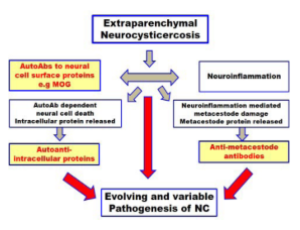
TICI 3 Revascularization after Atypical Presentation of Basilar Occlusion in the Setting of a Pediatric Patient
Todd Furr, Aydan Weintraub, Adam Blanden, Nicole Brescia
Stroke at a young age is a rarely reported entity whether it is uncommon or overlooked. When it occurs, it can result in lifetime neurological deficits and disabilities for the child and an overwhelming emotional and mental challenge to caregivers. One of the reasons that can lead childhood stroke to be overlooked is an atypical presentation onset with a headache or acute symptomatic seizure. As time is brain, these differences in childhood stroke can lead to a delay in diagnosis and symptoms considered as a stroke mimic.
J Exp Neurol, 2025, Volume Volume 6, Issue Issue 2, p105-110 | DOI: 10.33696/Neurol.6.113
The Role and Mechanism of Autoantibodies in Dysimmunity Related Neurological Diseases
Yongchao Xu, Wenshan Zhao, Jiali Shan, Yi Zhang, Yuqing Gong, Leping Wang, Jialu Ye, Jiawen Dong, Yalun Chen, Yuyang Ye, Keting Jin, Jinhui Hong, Qiang Ke, Kaibo Zhang, Jing Wu
Autoantibodies are antibodies produced by B cells capable of attacking their own tissues or organs after loss of immune tolerance. A large body of literature shows that autoantibodies play an important role in neurological diseases associated with immune abnormalities. Nowadays, neurological disorders are an important cause of disability and death in populations around the world, so it is important to study the role and mechanisms of autoantibodies in neurological disorders associated with immune abnormalities.
J Exp Neurol, 2024, Volume Volume 5, Issue Issue 3, p107-120 | DOI: 10.33696/Neurol.5.094
Comment On: Modulatory Effects of Magnetic Vestibular Stimulation on Resting-State Networks Can be Explained by Subject-Specific Orientation of Inner Ear Anatomy in the MR Static Magnetic Field
Boegle R, Dieterich M, Kirsch V
It was recently demonstrated that modulations in resting-state networks (RSNs) can be introduced via the stimulation of the vestibular inner ear by a strong magnetic field (>1 tesla) as used in magnetic resonance imaging (MRI).
J Exp Neurol, 2020, Volume Volume 1, Issue Issue 3, p109-114 | DOI: 10.33696/Neurol.1.018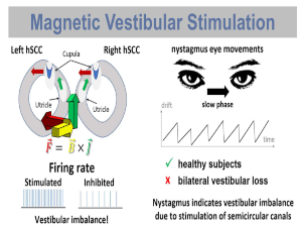
Molecular Cascades That Build and Connect Auditory Neurons from Hair Cells to the Auditory Cortex
Ebenezer N. Yamoah , Gabriela Pavlinkova, Bernd Fritzsch
Understanding the development of the auditory system is crucial for uncovering the molecular origins of hearing and its related disorders. During this development, spiral ganglion neurons extend peripheral fibers to cochlear hair cells and central projections to the cochlear nuclei, setting up a tonotopic map that connects the ear to the brainstem, enabling frequency-specific sound perception. This sensory information is then integrated bilaterally through a relay involving the superior olivary complex, lateral lemniscus, inferior colliculus, medial geniculate body, and the auditory cortex.
J Exp Neurol, 2025, Volume Volume 6, Issue Issue 3, p111-120 | DOI: 10.33696/Neurol.6.114
Commentary and Clinical Implications of “State of the Evidence Traffic Lights 2019: Systematic Review of Interventions for Preventing and Treating Children with Cerebral Palsy”
Iona Novak, Madison CB Paton, Megan Finch-Edmondson, Nadia Badawi, Michael Fahey, Annate Velde, Ashleigh Hines, Leigha Dark, Amanda Khamis, Maria Mc Namara, Emma Stanton, Cathy Morgan
Cerebral palsy is an umbrella term for a range of conditions affecting movement and posture and is the most common physical disability of childhood
J Exp Neurol, 2021, Volume Volume 2, Issue Issue 3, p112-119 | DOI: 10.33696/Neurol.2.043
Alzheimer and It’s Possible Therapy: A Review
Ashok Chakraborty, Anil Diwan
It is one of the most prevalent neurodegenerative disorder in the world, first described by a German Scientist, Alois Alzheimer, in 1906.
J Exp Neurol, 2020, Volume Volume 1, Issue Issue 4, p115-122 | DOI: 10.33696/Neurol.1.019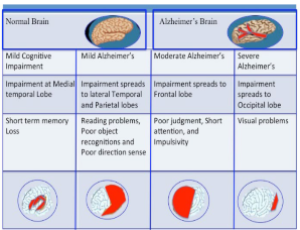
A Case Report of Rheumatoid Meningitis – A Rare Condition Presenting with Neurological Deficits
Arun Swaminathan, Arvind Ramesh
Rheumatoid meningitis (RM) is a rare condition seen in patients with longstanding rheumatoid arthritis (RA). It can present with a variety of neurological symptoms and is often mistaken for other neurological conditions, especially in the setting of immune suppression in these patients. We present a rare case of RM in an elderly woman with RA that presented with focal neurological symptoms and was eventually diagnosed on brain biopsy.
J Exp Neurol, 2023, Volume Volume 4, Issue Issue 3, p115-122 | DOI: 10.33696/Neurol.4.081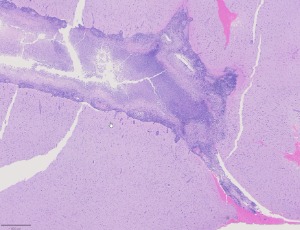
Differential Fecal Microbiome Dysbiosis after Equivalent Traumatic Brain Injury in Aged Versus Young Adult Mice
Booker T Davis IV, Mecca B.A.R. Islam, Promi Das, Jack A Gilbert, Karen J. Ho, Steven J. Schwulst
Traumatic brain injury (TBI) has a bimodal age distribution with peak incidence at age 24 and age 65 with worse outcomes developing in aged populations
J Exp Neurol, 2021, Volume Volume 2, Issue Issue 3, p120-130 | DOI: 10.33696/Neurol.2.044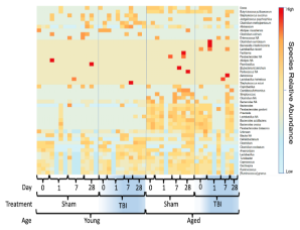
From Microcurrents to Macro Gains: Revolutionizing Ophthalmology with Non-Invasive Electrical Stimulation
Grace M Coyne, Ajay Ashok, Menglu Yang, Dong Feng Chen
For over a century, the therapeutic potential of electrical stimulation (ES) has intrigued scientists and clinicians alike. The ophthalmology field has largely centered its applications in posterior segment diseases of the eye, yet recent developments have brought corneal pathologies into sharper focus. This commentary aims to contextualize and critique the current landscape of ES in eye care, particularly the growing interest in the non-invasive techniques: transpalpebral electrical stimulation (TpES). Compared to transcorneal approaches, TpES not only preserves ocular surface integrity, but also enhances patient comfort and compliance—factors often overlooked in early clinical studies.
J Exp Neurol, 2025, Volume Volume 6, Issue Issue 3, p121-126 | DOI: 10.33696/Neurol.6.115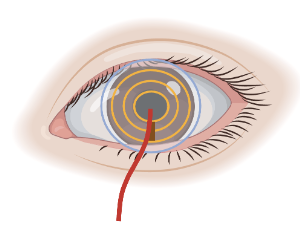
Atezolizumab Induced Neurotoxicity : A Systematic Review
Mahjoubi Yasmine Salem
Traditionally, cytotoxic chemotherapy dominated cancer treatment, but in recent years, immunotherapies, mainly immune checkpoint inhibitors (ICIs), have revolutionized cancer therapy by enhancing T-cell responses. Despite their efficacy, ICIs can induce toxicities affecting various organs, including the nervous system. Although rare, neurological complications of ICIs can be severe, contributing significantly to treatment-related mortality.
J Exp Neurol, 2024, Volume Volume 5, Issue Issue 3, p121-140 | DOI: 10.33696/Neurol.5.095
Resolving the Molecular Steps in Clostridial Neurotoxin Light Chain Translocation
Madison Zuverink, Joseph T. Barbieri
Due to use as human vaccines and therapies, the clostridial neurotoxins (CNTs) have been subjected to decades of scientific investigation using biophysical, electrophysiological, and pharmacological approaches to establish mechanisms of toxin action.
J Exp Neurol, 2020, Volume Volume 1, Issue Issue 4, p123-134 | DOI: 10.33696/Neurol.1.020
A Rare Case of Contralateral Onset of Seizures and SIRPIDs (Stimulus Induced Rhythmic, Periodic or Ictal Discharges)
Arvind Ramesh, Arun Swaminathan
SIRPIDs (Stimulus Induced rhythmic, periodic, or ictal discharges) represent a relatively newer addition to the terminology of electroencephalography (EEG) monitoring. They are meant to represent findings that may have epileptogenic potential and are repeatedly produced in response to various stimuli.
J Exp Neurol, 2025, Volume Volume 6, Issue Issue 3, p127-141 | DOI: 10.33696/Neurol.6.116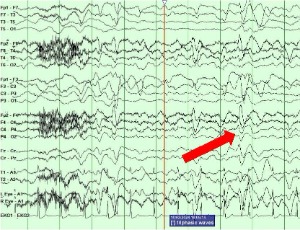
The Spread of Spectrin in Ataxia and Neurodegenerative Disease
Jon S. Morrow, Michael C. Stankewich
Experimental and hereditary defects in the ubiquitous scaffolding proteins of the spectrin gene family cause an array of neuropathologies
J Exp Neurol, 2021, Volume Volume 2, Issue Issue 3, p131-139 | DOI: 10.33696/Neurol.2.045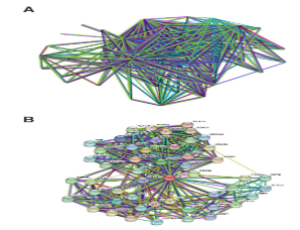
A Commentary on Concomitant Symptomatic Coronary Disease and Carotid Artery Stenosis -The Tufts Medical Center Experience
Yuki Ikeno, Kristofer M Charlton-Ouw, Mark D. Iafrati, Anand Y. Shah
Despite the development of surgical outcomes, acute stroke remain a devastating complication following coronary artery bypass grafting (CABG) [1].
J Exp Neurol, 2020, Volume Volume 1, Issue Issue 4, p135-137 | DOI: 10.33696/Neurol.1.021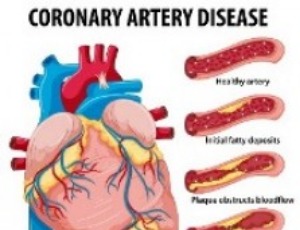
The Odyssey of Alpha-synuclein and Neuroinflammatory Mediators as Potential Candidates in the Aetiology of Parkinsons Disease
Jeswinder Sian-Hulsmann, Peter Riederer
The neurodegenerative disorder Parkinson’s disease (PD) is hallmarked by the presence of cytoplasmic inclusions, Lewy body (LB) and ravaged dopaminergic neurons in the substantia nigra pars compacta (SNc).
J Exp Neurol, 2020, Volume Volume 1, Issue Issue 4, p138-147 | DOI: 10.33696/Neurol.1.022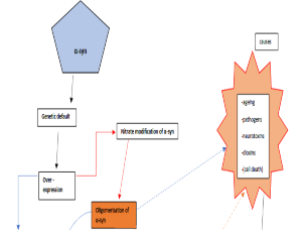
Impact of Cellular Senescence on Neurodegenerative Diseases during the COVID-19 Pandemic: Suitable Targets Required to Eliminate Cellular Senescence
Md Mohiuddin, Kazuo Kasahara
We recently reviewed the scientific literature that elucidates the impact of cellular senescence on COVID-19 complications.
J Exp Neurol, 2021, Volume Volume 2, Issue Issue 3, p140-142 | DOI: 10.33696/Neurol.2.046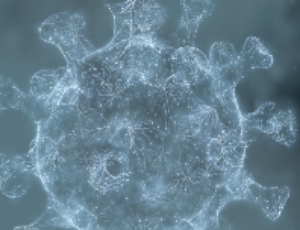
Gender Differences in the Association between Sedentary Time, Screen Time, and Depression
Lauren Elizabeth Kleidermacher, Mark Olfson
Previous research has indicated a relationship between sedentary time and depression, but it is unclear how this relationship differs by gender or subtype of sedentary behavior. This commentary expands our previous study on screen time, gender, and depression by examining relationships between sedentary time, gender, and depression. This additional analysis utilized the 2017- March 2020 National Health and Nutrition Examination Survey (NHANES).
J Exp Neurol, 2024, Volume Volume 5, Issue Issue 3, p141-144 | DOI: 10.33696/Neurol.5.096
Mucus as Part of the Intestinal Barrier in Neurological Diseases
John A. Damianos, Michael Camilleri
The objective of this paper is to review what is known about intestinal mucus in neurologic health and disease states. To set the stage, we summarize the physiology of mucus within the gastrointestinal tract and its role in gastrointestinal homeostasis and disease states. There is documentation of barrier dysfunction as well as damage to epithelial or mucosal defense mechanisms in prototypical neurological diseases, such as multiple sclerosis and Parkinson disease.
J Exp Neurol, 2025, Volume Volume 6, Issue Issue 3, p142-151 | DOI: 10.33696/Neurol.6.117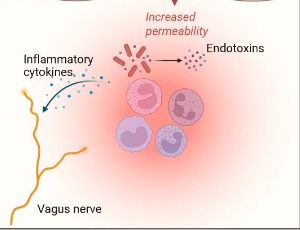
Body Iron Overload is a Determining Factor in Brain Damage in Acute Ischemic Stroke
Joan Ramón Torrella, Ramón Rama
Stroke is the second largest cause of death worldwide, with a world annual mortality incidence of about 5.5 million people, and it is also the leading cause of disability worldwide with 50% of survivors being chronically disabled.
J Exp Neurol, 2021, Volume Volume 2, Issue Issue 4, p143-148 | DOI: 10.33696/Neurol.2.047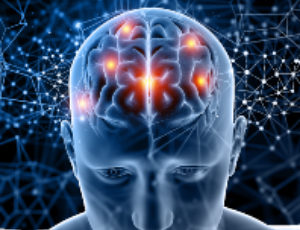
Testing the Efficacy of Minocycline Treatment in an Awake, Female Rat Model of Repetitive Mild Head Injury
Rosemarie Hightower, Eric Brengel, Sophia Prom, Praveen Kulkarni, Craig F Ferris
Minocycline is being tested in clinical trials for the treatment of stroke and traumatic brain injury. As an antibiotic it reduces microglia activation. Can minocycline be used to treat mild repetitive head injury? To that end, minocycline was tested in a novel, closed-head, momentum exchange model of repetitive mild head injury in female rats impacted while fully awake. Magnetic resonance imaging (MRI) revealed there was no brain damage or contusion attesting to the mild nature of the head impacts in this model.
J Exp Neurol, 2024, Volume Volume 5, Issue Issue 3, p145-161 | DOI: 10.33696/Neurol.5.097
- Abstract |
- Full Text |
- Cite |
- Supplementary File
Can ECT Improve the Motor Symptoms of a Neurological Disease? A Case of Dopa-Responsive Dystonia
Clement Guillet
Electroconvulsive therapy (ECT) is a well-known treatment for mood disorders. There have also been reports of improvement in neurological disorders following ECT, particularly in Parkinson’s disease, but also in some cases of cervical dystonia, orofacial dystonia, or blepharospasm.
J Exp Neurol, 2020, Volume Volume 1, Issue Issue 4, p148-151 | DOI: 10.33696/Neurol.1.023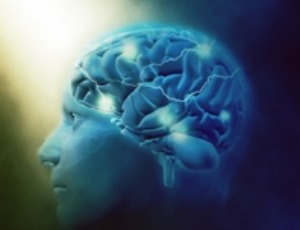
Capillary Stalling: A Mechanism of Decreased Cerebral Blood Flow in AD/ADRD
Reece Crumpler, Richard J. Roman, Fan Fan
Alzheimer’s Disease (AD) and Alzheimer’s Disease-Related Dementias (ADRD) are debilitating conditions that are highly associated with aging populations, especially those with comorbidities such as diabetes and hypertension.
J Exp Neurol, 2021, Volume Volume 2, Issue Issue 4, p149-153 | DOI: 10.33696/Neurol.2.048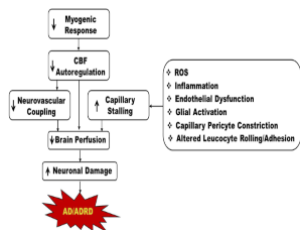
Cutaneous Side Effects of First-Second Line Oral Disease - Modifying Treatments in Patients with Multiple Sclerosis
Doruk Arslan, Asli Tuncer
Multiple sclerosis (MS) is a progressive autoimmune and sometimes disabling disease of the central nervous system (CNS), characterized by formation of white matter lesions in the CNS due to inflammation, demyelination and axonal loss [1-3].
J Exp Neurol, 2020, Volume Volume 1, Issue Issue 4, p152-157 | DOI: 10.33696/Neurol.1.024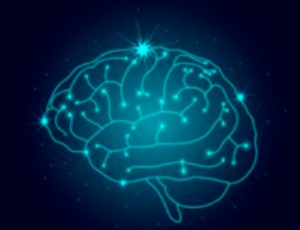
Central Nervous System (CNS) Vasculitis in a Patient with Systemic Lupus Erythematosus (SLE) and Lupus Nephritis: A Case Report
Abdul Majid, Ayub Khan, Muhammad Noman, Shahid Ali, Muhammad Osama, Hafsa Salim, Farhan Shahzad
Systemic lupus erythematosus (SLE) is characterized by diverse symptoms including fever, joint pain, facial rash, blood in urine, and sores in the mouth. Neuropsychiatric SLE (NPSLE) refers to neurological and psychiatric manifestations in SLE patients after exclusion of other potential causes. A 21-year-old woman with established lupus nephritis presented with left-sided weakness, aphasia, confusion and focal neurological deficits. Imaging studies demonstrated multiple infarcts and central nervous system (CNS) vasculitis.
J Exp Neurol, 2025, Volume Volume 6, Issue Issue 3, p152-157 | DOI: 10.33696/Neurol.6.118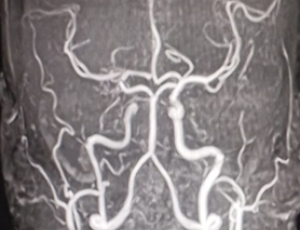
Comparison of Different Post-Processing Algorithms for Dynamic Susceptibility Contrast Perfusion Imaging of Multiple Sclerosis Lesions: A Time to Peak Analysis
Lucia Monti, Davide Momi, Tommaso Casseri, Davide Del Roscio, Matteo Bellini, Alessandro Rossi
The purpose of the present study was to evaluate, in multiple sclerosis (MS) lesions, the diagnostic performance of two different commercial post-processing MR perfusion software. These two different algorithms for processing Dynamic susceptibility contrast (DSC) perfusion images have been used to differentiate perfusion values among white matter (WM) lesions, normal appearing white matter (NAWM), and grey matter (GM) in MS.
J Exp Neurol, 2021, Volume Volume 2, Issue Issue 4, p154-161 | DOI: 10.33696/Neurol.2.049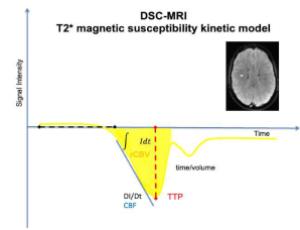
Integrating Psychotherapy into Clinical Care for Individuals with Parkinson’s Disease
Andreas-Antonios Roussakis, Rima Hawkins, Cara Mackley, Paola Piccini
Psychotherapy has historically played a limited role in Parkinson’s disease (PD) care, despite the high prevalence of neuropsychiatric and psychological conditions in this population. With sporadic evidence for the benefits of psychotherapy in PD, a clear pathway for psychotherapeutic intervention is still in development.
J Exp Neurol, 2025, Volume Volume 6, Issue Issue 4, p158-161 | DOI: 10.33696/Neurol.6.119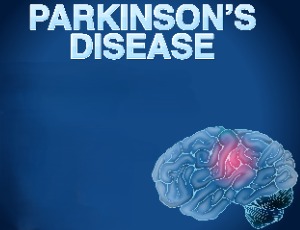
A Protocol for the Generation of Treatment-naïve Biopsy-derived Diffuse Intrinsic Pontine Glioma and Diffuse Midline Glioma Models
Matt C. Biery, Alyssa Noll, Carrie Myers, Shelli M. Morris, Conrad A. Winter, Fiona Pakiam, Bonnie L. Cole, Samuel R. Browd, James M. Olson, Nicholas A. Vitanza
Diffuse intrinsic pontine glioma (DIPG) is an aggressive brain tumor that arises in the ventral pons during middle childhood.
J Exp Neurol, 2020, Volume Volume 1, Issue Issue 4, p158-167 | DOI: 10.33696/Neurol.1.025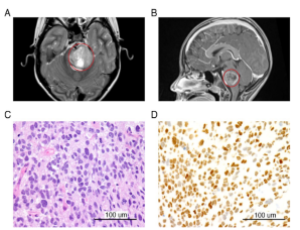
- Abstract |
- Full Text |
- Cite |
- Supplementary File
A Commentary on “Suppressive Effect of Topical Moxifloxacin on Imiquimod-Induced Model of Psoriasis in Mice”
Alaa Hamza Abbas
The Journal of Experimental Neurology frequently highlights studies that bridge the gap between neurological disorders and systemic conditions, particularly those with an immunological component. The recent article, "Suppressive Effect of Topical Moxifloxacin on Imiquimod-Induced Model of Psoriasis in Mice," by Abbas et al., presents intriguing data suggesting a potential role for the fluoroquinolone antibiotic moxifloxacin in the treatment of psoriasis, a chronic inflammatory skin disorder.
J Exp Neurol, 2025, Volume Volume 6, Issue Issue 4, p162-165 | DOI: 10.33696/Neurol.6.120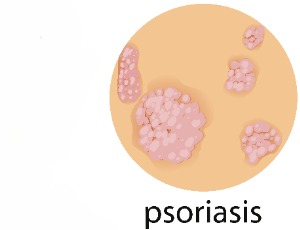
Acute Obstructive Hydrocephalus and Acute Cerebellar Ischemic Stroke as a Complication of Takayasu Arteritis in a Young Male Patient: A Rare Case Report
Muhammad Hashim, Asif Khan, Muhammad Khadim, Sabir Shah, Awais Ahmad, Farhan Shahzad
Introduction: Takayasu arteritis is a rare type of vasculitis associated with various neurological manifestations. Multiple components, including thrombosis, embolism, stenosis, and vascular inflammation, are involved in the underlying pathophysiology. Case Presentation: A 21-year-old male patient presented with vomiting, difficulty speaking, disorientation, and seizures. On examination, pinpoint pupils and blood pressure discrepancies among four limbs were noted.
J Exp Neurol, 2024, Volume Volume 5, Issue Issue 3, p162-166 | DOI: 10.33696/Neurol.5.098
Prevention of Opioid Addiction
Stephanie A. Ihezie, Nachum Dafny
Opioid addiction is classified as a substance use disorder (SUD), a complex and chronic health condition with physical, social, and psychological consequences. While there is no cure for it, we present a novel approach towards preventing a hallmark feature of addiction-- the opiate withdrawal syndrome. Opioids exert numerous effects, acutely and chronically, on the nervous system with physical dependence, tolerance, and withdrawal being the most adverse chronic features.
J Exp Neurol, 2021, Volume Volume 2, Issue Issue 4, p162-172 | DOI: 10.33696/Neurol.2.050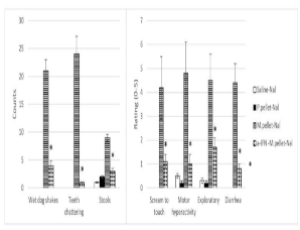
Extraforaminal Spinal Nerve Stimulation: A Practical Surgical Guide Based on Clinical Experience
Danielle Kohr, Alaa Abd-Elsayed, Sudhir Diwan, Michael Kugler
Extraforaminal spinal nerve stimulation (SNS) is an emerging neuromodulation technique for treating neuropathic pain. Targeting the spinal nerve distal to the intervertebral foramen enables anatomically precise stimulation, distinguishing it from conventional spinal cord or dorsal root ganglion stimulation. This article provides the first comprehensive description of the extraforaminal SNS approach, including technical refinements, anatomical insights, and clinical experience.
J Exp Neurol, 2025, Volume Volume 6, Issue Issue 4, p166-180 | DOI: 10.33696/Neurol.6.121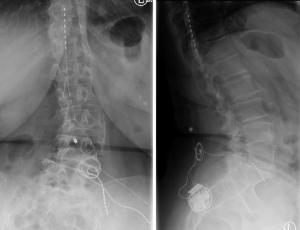
Irradiation of Drosophila melanogaster Leads to Increased Autophagy in Multiple Adult Tissues
Terrence M Trinca, Bilal R Malik
A common source of tissue toxicity is ionizing radiation to which humans can be exposed in a variety of ways including environmental contamination, radiotherapy, space and aviation travel. Radiotherapy is the most common method used to treat majority of cancers. However, the irradiation of patients can lead to many negative secondary effects causing irreparable internal organ damage due to its genotoxic effects and disruption of oxidative state of cells which, if left unresolved, can lead to cell death. Cells use autophagy as a homeostatic mechanism to remove debris and damaged organelle. However, it is not known whether autophagy is affected by radiation.
J Exp Neurol, 2024, Volume Volume 5, Issue Issue 4, p167-171 | DOI: 10.33696/Neurol.5.099
Integrating Neurology and Psychiatry throughout Educational Curricula for Healthcare Professionals
Brinda Desai Bradaric, Alana Kirby, T. Celeste Napier
We recently reviewed the scientific literature linking dopamine agonist pharmacotherapy for neurological disorders to the development of impulsive and compulsive spectrum disorders (ICSDs).
J Exp Neurol, 2020, Volume Volume 1, Issue Issue 4, p168-172 | DOI: 10.33696/Neurol.1.026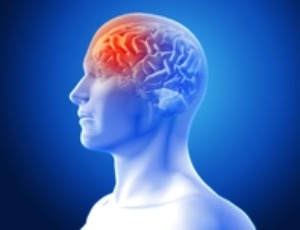
Efficacy of NeuroHelp Topical Herbal Medicine in Treating Painful Diabetic Neuropathy (DPN)
Ourmaan Nezami Narjabad, Mina Mohebbi, Fatemeh Salamat, Maryam Zahedi, Shohre Vosoogh, Sona Ghorashi
Painful diabetic peripheral neuropathy (DPN) is one of the most common complications of diabetes mellitus and a major cause of disability and poor quality of life in patients with diabetes. In addition, health care costs associated with DPN are increasing. Given the challenges and limitations of current pharmacological treatments, traditional herbal remedies present a viable option. As a result, we formulated a new topical treatment, “NeuroHelp”.
J Exp Neurol, 2024, Volume Volume 5, Issue Issue 4, p172-182 | DOI: 10.33696/Neurol.5.100
Left Atrial Appendage Occlusion: Where are We Going?
Seung Yong Shin, Sang Wook Kim, Jai-Wun Park
Prevention of ischemic stroke is one of the most important issues in patients with atrial fibrillation (AF). Currently, most patients are managed satisfactorily with oral anticoagulant (OAC) therapy. The remaining patients, who cannot tolerate long-term systemic OAC or who have an excess thrombotic burden that cannot be adequately controlled by OAC alone, require local anti-thrombotic therapy such as left atrial appendage (LAA) mechanical exclusion, either by surgical excision or percutaneous closure device implantation.
J Exp Neurol, 2021, Volume Volume 2, Issue Issue 4, p173-176 | DOI: 10.33696/Neurol.2.051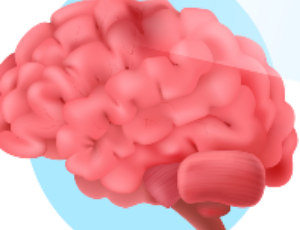
Targeting the Cancer Stem Cell (CSC) Phenotype: Uprooting the Evil Seed
John Laterra, Hernando Lopez-Bertoni
If cancer is considered the emperor of all maladies, then it is fair to say that cancer stem cells (CSCs) are the seeds that spread this evil.
J Exp Neurol, 2020, Volume Volume 1, Issue Issue 4, p173-181 | DOI: /10.33696/Neurol.1.027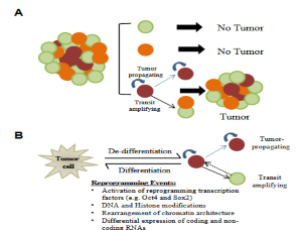
In vivo Neuropathology: Detecting the Neurotoxicity of Candidate Drugs during Early Drug Discovery
Craig F Ferris, Praveen Kulkarni
Twenty-five percent of small molecules in drug development for CNS indications fail in clinical trials due to complications with neurotoxicity. Unfortunately, this is not discovered earlier. Indeed, it is very infrequent that a drug is flagged for neurotoxic side effects in early drug discovery (1). The consequences are two-fold: 1) loss of time and money in bringing new drugs to market and, 2) the unwitting exposure of patents in clinical trials to the neurotoxic side effects of what otherwise could be a drug candidate that is effectively treating the problem.
J Exp Neurol, 2021, Volume Volume 2, Issue Issue 4, p177-178 | DOI: 10.33696/Neurol.2.052
From Atmospheric Forecasting to Neurological Inspiration: The Emerging Role of Brain Emotional Learning in Environmental Modeling
Alireza Hakimi
The intersection of computational neuroscience and environmental modeling has birthed novel algorithms that emulate brain-inspired emotional learning. One such contribution is the BELBFM (Brain Emotional Learning Based on Basic and Functional Memories) model, recently proposed for dual-height wind speed forecasting. While designed for meteorological applications, the structure and function of BELBFM echo principles long studied in neurobiology.
J Exp Neurol, 2025, Volume Volume 6, Issue Issue 4, p181-182 | DOI: 10.33696/Neurol.6.122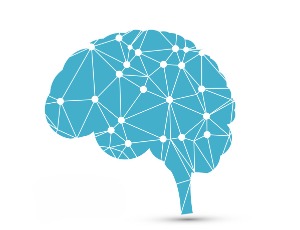
Hypoplastic Internal Carotid Artery in a Young Stroke Patient
Farid Ullah, Muhammad Osama, Salman Khan, Imran Ullah, Abdullah, Aizaz Ali, Hafsa Salim
Hypoplastic internal carotid artery (HICA) is a rare congenital vascular anomaly, typically asymptomatic due to collateral circulation. However, in certain cases, it may present with ischemic stroke. We report a 17-year-old male with a history of smoking and illicit drug use who presented with acute left-sided weakness. Imaging revealed an infarct in the right middle cerebral artery territory and a hypoplastic right internal carotid artery.
J Exp Neurol, 2025, Volume Volume 6, Issue Issue 4, p183-187 | DOI: 10.33696/Neurol.6.123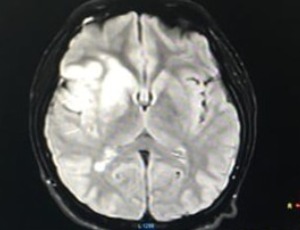
Protein Citrullination in Amyotrophic Lateral Sclerosis and Other Neurodegenerative Diseases
Issa O. Yusuf, Webb Camille, Paul R. Thompson, Zuoshang Xu
Protein citrullination (PC) is a posttranslational modification (PTM) that converts a peptidyl arginine into a peptidyl citrulline. Aberrant PC is a hallmark of neurodegenerative diseases, including amyotrophic lateral sclerosis (ALS), Alzheimer’s disease, Parkinson’s disease, prion disease, and multiple sclerosis. Common among these diseases is a dramatic increase of PC in reactive astrocytes. Some citrullinated proteins have been identified.
J Exp Neurol, 2024, Volume Volume 5, Issue Issue 4, p183-191 | DOI: 10.33696/Neurol.5.101
Current Techniques and Engineering Opportunities for Advancement and Improvement in Electroencephalographic Acquisition and Analyses
Arun Swaminathan
Epilepsy is a highly prevalent condition and affects about 50-65 million people worldwide with great impact on health and quality of life, including medical and social aspects. Electroencephalography (EEG) represents the main diagnostic approach to evaluate patients with epilepsy. EEG techniques have achieved significant improvement over the years and keep evolving to meet increasing demands such as higher accuracy, innovation and better quality and technique to enable improved diagnosis and treatment of epilepsy and other conditions.
J Exp Neurol, 2024, Volume Volume 5, Issue Issue 4, p192-209 | DOI: 10.33696/Neurol.5.102
Protein Assembly Modulation: A New Approach to Amyotrophic Lateral Sclerosis (ALS) Therapeutics
Shao Feng Yu, Kumar Paulvannan, Dennis Solas, Anuradha F. Lingappa, Ana Raquel Moreira, Shriya Sahu, Maya Michon, Amanda Macieik, Danielle Goldsmith, Nicholas DeYarman, Suguna Mallesh, M. Dharma Prasad, Claudia Maios, Kai Ruan, Giulio S. Tomassy, Elizabeth Jensen, Emma McGuirk, Verian Bader, Andreas Mueller-Schiffmann, Jonathan C. Reed, Jaisri R. Lingappa, Vinod Asundi, Shi Hong, Steve Jacobsen, Nicholas Brandon, Lyle Ostrow, Tom Lloyd, J. Alex Parker, Kim A. Staats, Justin Ichida, James C. Dodge, Debendranath Dey, Carsten Korth, Suganya Selvarajah, Vishwanath R. Lingappa, Jeffrey Rosenfeld
Amyotrophic Lateral Sclerosis (ALS) is a devastating and progressive neurodegenerative disease with a complex, multifactorial pathophysiology, culminating in death of motor neurons. We introduce a new mechanism of ALS pathogenesis via study of a novel drug-like small molecule series that targets a subset of protein disulfide isomerase (PDI) within a previously largely unappreciated transient and energy-dependent multi-protein complex enriched for proteins of the ALS interactome. This drug, found by a novel phenotypic screen, has activity in cellular models for both familial and sporadic ALS, as well as in transgenic worms, flies, and mice bearing a diversity of human genes with ALS-associated mutations.
J Exp Neurol, 2024, Volume Volume 5, Issue Issue 4, p210-230 | DOI: 10.33696/Neurol.5.103
- Abstract |
- Full Text |
- Cite |
- Supplementary File
About Scientific Archives
Scientific Archives is a global publisher initiated with the mission of ensuring equal opportunity for accessing science to research community all over the world. Spreading research findings with great relevance to all channels without any barrier is our goal. We want to overcome the challenges of Open Access with ensured quality and transparency.
